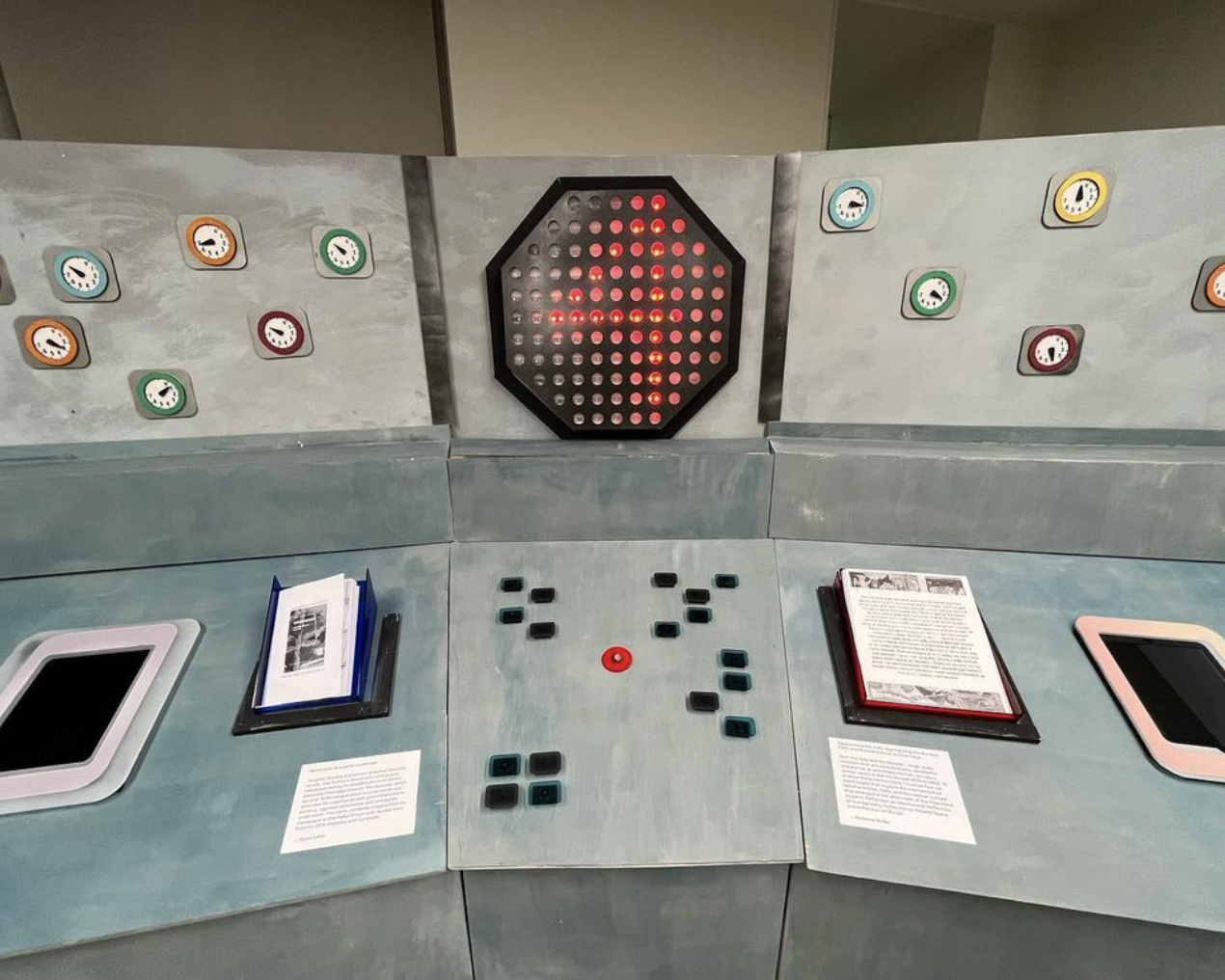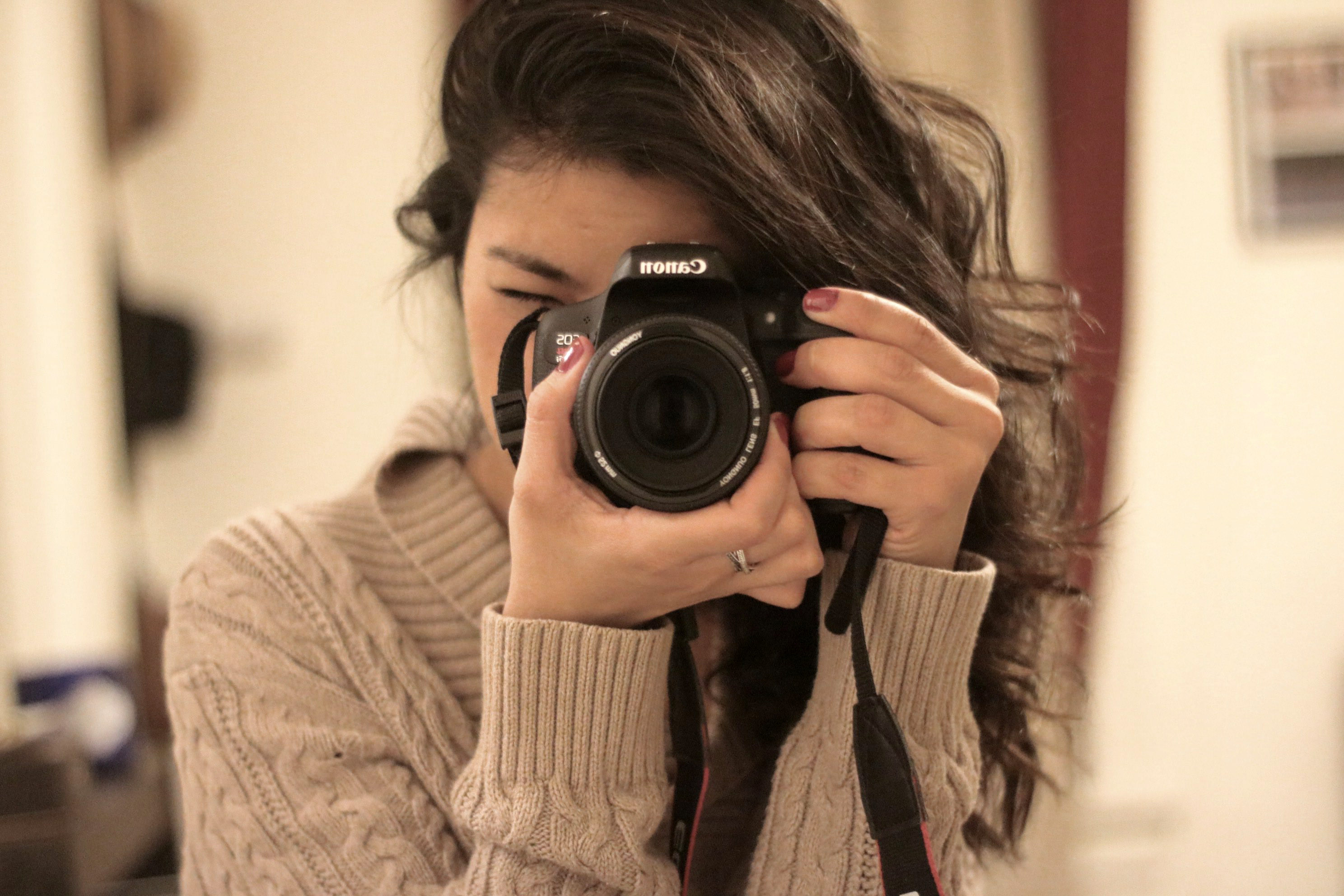[Editor’s Note: This article uses the Ukrainian spelling “Chornobyl,” as opposed to the Russian spelling “Chernobyl.” The Russian spelling was imposed upon Ukraine during the Soviet era. The Ukrainian is the spelling used by Professor José Vergara in the course and is preferred by many style guides.]
As of November 16th, Park Science’s third floor atrium is home to The Reactor Room: An Immersive Chornobyl* Exhibition. Although we are currently in 2023, The Reactor Room’s physical installation pulls viewers back to the events that took place on April 26, 1986 to inform visitors about the defining moments and effects of the Chornobyl disaster.
The Reactor Room, full of displays and interactive materials, is a compilation of work from students in Professor Vergara’s courses RUSS043 Chernobyl: Nuclear Narratives and The Environment at Swarthmore College (Spring 2020) and RUSSB220 Chornobyl (Fall 2023) at Bryn Mawr College. Additional projects were developed by the Bryn Mawr 2023 Digital Summer Scholar Fellows Program to represent the disaster Chornobyl as a whole.

Currently, The Reactor Room website is home to over 40 student projects, which can be viewed on the tablets embedded into the control panels at the installation. In the physical exhibition, the liquidator portrait wall was painted by fellowship participants. It will be open to the public in Park Science Building until June 2024.
The Summer 2023 Digital Scholarship Fellows also worked on building some digital elements on the website. Some students in RUSSB220 crafted physical projects in The Reactor Room, which include a model of The Elephant’s Foot, an interactive door, pieces of a scrapbook, comics and travel book prints.
Inside the room a significant amount of the content contributed was made by students while Professor José Vergara, Makerspace coordinator Bronwen Densmore and Digital Scholarship Specialist Alice McGrath focused on the behind-the-scenes of the physical installation and website.
Vergara’s Vision
Professor Vergara shared that the origin of The Reactor Room dates back to the summer of 2019. He explained, “That previous spring I visited the studio of Ilya and Emilia KabaChornobylkov, two Russian Conceptualist artists who created many immersive installation pieces, with a few students. I was inspired by their work and wanted to create something similar for my upcoming course on Chornobyl — something that could transport visitors to a space they probably wouldn’t see otherwise.” The project first launched digitally from Swarthmore in 2020, however, due to the pandemic, the exhibition could not be fully realized until now.
Even with his research, and all the contributions from his students, Professor Vergara expressed that Chornobyl will continue to defy comprehension because the disaster transformed the world in ways that we can’t always see; not all of Chornobyl’s rippling effects take the form of physical manifestations.
Vergara adds: “I think of The Reactor Room as an opportunity for both my students and the broader campus community to learn about the worst nuclear disaster in history and to consider how it still affects our world today. My take is that by adding up all these perspectives—history, literature, pop culture, politics, media, ecology, and so on—we can get closer to what Chornobyl is. […] Diversity of thought is crucial to understanding Chornobyl.”
Making the Reactor Room

Densmore played a major role in the physical creation of The Reactor Room. She’s worked with Professor Vergara and Alice McGrath over the past year to construct their vision and parts of the digital space into a tangible room.
When asked about the curation of the space, Densmore commented, “We were very interested in creating a space filled with objects that was both immersive and accessible…Our hope is that visitors are inspired to actively engage and be hands-on in the space.”
She also noted that the space can connect visitors to the content on the website via iPads, and that the connection between the digital and physical environments is another method for visitors to interactively engage with all the contributions students made for The Reactor Room.
Construction in the Park Science lounge provided some difficulty. Densmore says that it took the whole team to reach their finish line since the space isn’t designed to contain a second room — which is what they created.
Densmore mentioned that the project was the first exhibition of this kind that she’s worked on and it was an excellent opportunity to learn about the wealth of talent and resources available on Bryn Mawr’s campus.
Digital Side

Alice McGrath offered insight on the digital front of The Reactor Room. She said, “This is a project about energy [in the] humanities or environmental humanities, and the site itself uses a technology that has a lower carbon footprint.”
The main challenge faced when setting up the digital environment was time, since McGrath and her team had a little less than a week to build the new elements into the website prior to launch. The 2023 Summer Fellows include Mst. Fariha Tasnim Busra, Katya Little, Ksenia Mats, Leela Smelser, and Skhye Zhong.
McGrath explained part of her role in the construction: “I wrote a Python script that would turn [projects] into roughly the format required for the site, but there was still some hand editing.” She also had to ensure that the website was responsive to different viewing platforms; from laptops, to tablets, to phones.
Looking to the Future
Professor Vergara further noted that he’s loved seeing all the creative projects brought into The Reactor Room space — whether digitally or physically. As he plans to continue iterations of the Chornobyl course, he says that he’d “like for students to build on the work of their predecessors, adding even more pieces to the site and making it an intergenerational project.”
Oh, and if you happen to hear the phone ring as you pass by, make sure to take that call.








